Human umbilical cord-derived mesenchymal stem cells attenuate hepatic stellate cells activation and liver fibrosis
- PMID: 38874773
- PMCID: PMC11178641
- DOI: 10.1007/s11033-024-09664-6
Human umbilical cord-derived mesenchymal stem cells attenuate hepatic stellate cells activation and liver fibrosis
Abstract
Background: Liver cirrhosis, a prevalent chronic liver disease, is characterized by liver fibrosis as its central pathological process. Recent advancements highlight the clinical efficacy of umbilical cord mesenchymal stem cell (UC-MSC) therapy in the treatment of liver cirrhosis.
Methods and results: We investigated the pharmacodynamic effects of UC-MSCs and MSC conditional medium (MSC-CM) in vivo, utilizing a carbon tetrachloride (CCl4)-induced fibrotic rat model. Concurrently, we assessed the in vitro impact of MSCs and MSC-CM on various cellular process of hepatic stellate cells (HSCs), including proliferation, apoptosis, activation, immunomodulatory capabilities, and inflammatory factor secretion. Our results indicate that both MSCs and MSC-CM significantly ameliorate the pathological extent of fibrosis in animal tissues, reducing the collagen content, serum biochemical indices and fibrosis biomarkers. In vitro, MSC-CM significantly inhibited the activation of the HSC line LX-2. Notably, MSC-CM modulated the expression of type I procollagen and TGFβ-1 while increasing MMP1 expression. This modulation restored the MMP1/TIMP1 ratio imbalance and extracellular matrix deposition in TGFβ-1 induced fibrosis. Both MSCs and MSC-CM not only induced apoptosis in HSCs but also suppressed proliferation and inflammatory cytokine release from activated HSCs. Furthermore, MSCs and MSC-CM exerted a suppressive effect on total lymphocyte activation.
Conclusions: UC-MSCs and MSC-CM primarily modulate liver fibrosis severity by regulating HSC activation. This study provides both in vivo and in vitro pharmacodynamic evidence supporting the use of MSCs in liver fibrosis treatment.
Keywords: CCL4-induced liver fibrosis; Hepatic stellate cell activation; Immunomodulation; MSC conditional medium; UC-MSC.
© 2024. The Author(s).
Conflict of interest statement
The authors declare no competing interests.
Figures
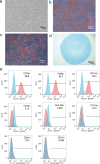
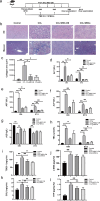
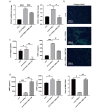
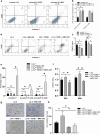
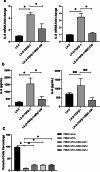
Similar articles
-
Mesenchymal stem cells and their secreted molecules predominantly ameliorate fulminant hepatic failure and chronic liver fibrosis in mice respectively.J Transl Med. 2016 Feb 9;14:45. doi: 10.1186/s12967-016-0792-1. J Transl Med. 2016. PMID: 26861623 Free PMC article.
-
Microencapsulated human mesenchymal stem cells decrease liver fibrosis in mice.J Hepatol. 2015 Mar;62(3):634-41. doi: 10.1016/j.jhep.2014.10.030. Epub 2014 Oct 30. J Hepatol. 2015. PMID: 25450712
-
Human Umbilical Cord Mesenchymal Stem Cells Ameliorate Hepatic Stellate Cell Activation and Liver Fibrosis by Upregulating MicroRNA-455-3p through Suppression of p21-Activated Kinase-2.Biomed Res Int. 2021 Feb 25;2021:6685605. doi: 10.1155/2021/6685605. eCollection 2021. Biomed Res Int. 2021. PMID: 33708992 Free PMC article.
-
Mesenchymal stromal cells and liver fibrosis: a complicated relationship.FASEB J. 2016 Dec;30(12):3905-3928. doi: 10.1096/fj.201600433R. Epub 2016 Sep 6. FASEB J. 2016. PMID: 27601441 Review.
-
A systematic review of the anti-inflammatory and anti-fibrotic potential of human umbilical cord mesenchymal stem cells-derived exosomes in experimental models of liver regeneration.Mol Biol Rep. 2024 Sep 20;51(1):999. doi: 10.1007/s11033-024-09929-0. Mol Biol Rep. 2024. PMID: 39302506
Cited by
-
Mesenchymal Stem Cells Loaded in Injectable Alginate Hydrogels Promote Liver Growth and Attenuate Liver Fibrosis in Cirrhotic Rats.Gels. 2025 Mar 27;11(4):250. doi: 10.3390/gels11040250. Gels. 2025. PMID: 40277686 Free PMC article.
-
Preclinical Evaluation of the Safety, Toxicity and Efficacy of Genetically Modified Wharton's Jelly Mesenchymal Stem/Stromal Cells Expressing the Antimicrobial Peptide SE-33.Cells. 2025 Feb 26;14(5):341. doi: 10.3390/cells14050341. Cells. 2025. PMID: 40072070 Free PMC article.
-
Embryonic lethal abnormal vision like 1-stabilized histone deacetylase 6 promotes hepatic stellate cell activation to accelerate liver fibrosis progression through ribosomal protein S5 downregulation.Cytojournal. 2025 Mar 6;22:30. doi: 10.25259/Cytojournal_221_2024. eCollection 2025. Cytojournal. 2025. PMID: 40260071 Free PMC article.
References
MeSH terms
Substances
LinkOut - more resources
Full Text Sources
Medical
Research Materials
Miscellaneous

